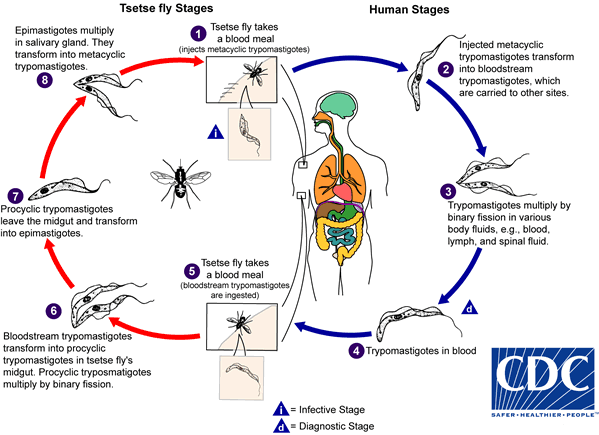Trypanosomiasis is a Parasitic Disease and a Silent Killer
Trypanosomiasis (sleeping sickness)
It is a vector-borne parasitic disease and commonly known as sleeping sickness. It is first found in Africa. The protozoa parasite belongs to trypanosomiasis genus. Tsetse fly transmits this infection which in turn acquire this infection from infected humans or animals. Trypanosomiasis is an epidemic. The years 1896,1906 qnd 1970 have been effected by this epidemic and countries that were effected are Uganda, and Congo Basin in Africa. In 1972 Mobile health care teams in 1960 organized screening millions of people them from risk. In 1960 the disease was almost disappeared but reappeared in last 30 years. Recent WHO efforts and those of national control program and nongovernmental organizations (NGOs) have stopped and begun to reverse the upward trend of new cases.- Health Info.
Life Cycle of Trypanosomiasis

Symptoms of Trypanosomiasis
Trypanosomiasis multiply in subcutaneous tissues, blood and lymph. The parasites then cross the blood-brain barrier to infect the central nervous system. The Trypanosome can cross from mother to child. Accidental infections have occurred in laboratories due to pricks from contaminated needles.
Treatment for Trypanosomiasis
All medicines used to cure this disease are toxic. The treatment becomes complicated as the virus advances. In the preliminary stages the administer the less toxic drug is easy. It becomes complicated as the stages advances because the drug has tocross the blood-brain barrier to reach the parasite. Such drugs are quite toxic and complicated to administer. Four drugs are registered for the treatment of sleeping sickness and provided free of charge to endemic countries through a WHO private partnership with sanofi-aventis (pentamidine, melarsoprol and eflornithine) and Bayer AG (suramin).